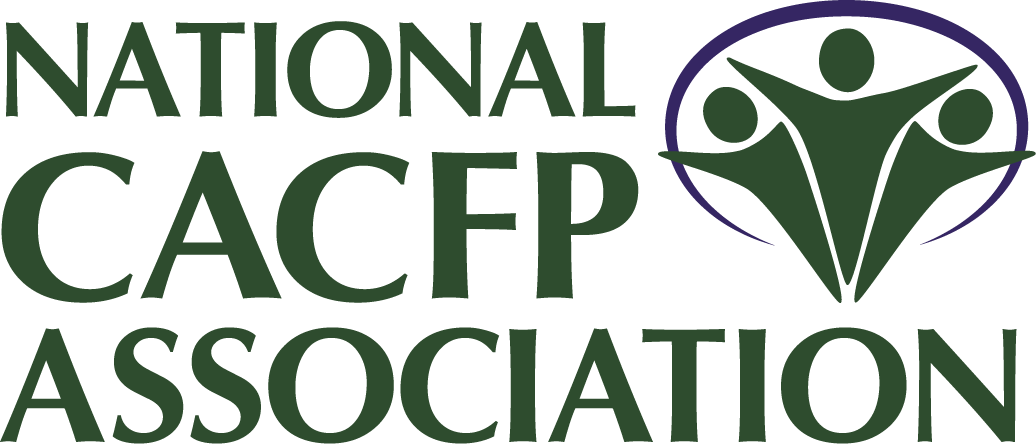Quarterly Policy Update: January 2025
January 21, 2025

The end of 2024 brought many changes and updates for the CACFP. USDA announced funding for child care to purchase local, released two requests for information, released seven pieces of guidance, published two studies. Following the 2024 election, there is now new leadership in Congress and USDA. Keep reading to see what you’ve missed and stay up to date with CACFP policy!
Congressional Updates
At the start of this year, a new congress (the 119th) began and on January 20th a new presidential administration will enter office. With these changes, there will be new leadership on congressional committees and in USDA. Here’s what positions are changing:
- Congressman Tim Walberg of Michigan’s fifth district is the new Chair of the House Education and Workforce Committee, which has jurisdiction over all house legislation related to child nutrition programs. Congressman Bobby Scott of Virginia’s third district remains the Ranking Member of the Committee.
- Senator Amy Klobuchar of Minnesota is the new Ranking Member of the Senate Agriculture committee, which has jurisdiction over all senate legislation related to child nutrition programs. Senator John Boozman, of Arkansas, remains the Chair of the Committee.
Local Food for Child Care Funding
USDA released a Notice of Funding Opportunity (NOFO) on December 10, 2024, for State agencies to access funds to purchase and distribute local foods for schools and CACFP child care providers in their state. USDA has committed $188.6 million specifically for institutions participating in the CACFP. State agencies must submit a proposal in order to access these funds for the schools and CACFP providers in their state and there can only be one application per state. Funds will be awarded through a non-competitive process based on a formula using the meal counts of participants of the CACFP in each State. Cooperative agreements will be for a period of three years from the time of award.
USDA Requests for Information
Grain-Based Desserts and High-Protein Yogurt Crediting in CNPs
USDA is seeking public comment on:
- How grain-based desserts are identified and whether they should be defined as “grains high in added sugars” instead – suggesting a potential added sugar limit for all grain products.
- Whether high-protein yogurt (Greek and Greek-style yogurt) should be identified and credited differently than regular yogurt.
Comment Deadline: March 26, 2025
Child Nutrition Programs Tribal Pilot Projects
The Consolidated Appropriations Act, 2024 authorized USDA to conduct pilot projects to allow one or more Tribes or Tribal organizations to administer one or more Child Nutrition Programs, assuming the roles and responsibilities typically held by State agencies. USDA will use comments received in response to this Request for Information to inform the application process, and eligibility and selection criteria, for the Child Nutrition Tribal Pilot Projects.
Comment Deadline: March 24, 2025
USDA Guidance
Registered Dietitian Medical Statements
The USDA released a memorandum to clarify the updated regulatory requirement for program operators to accept medical statements from registered dietitians. Beginning October 1, 2025, Registered Dietitians (RD) and Registered Dietitian Nutritionists (RDN) will be able to provide medical statements. RDs are not required to be licensed to provide medical statements, as some states do not have licensing requirements for RDs, however RDs located in a state where licensing is required must be licensed to provide a medical statement.
The USDA released a memorandum to provide recommendations on infant feeding and infant meal pattern requirements in the CACFP. The memorandum includes updates regarding medical statements from registered dieticians, substituting vegetables for grains at eligible sites, added sugar limits, tofu crediting, and tempeh crediting.
Grain Requirements in the CACFP
The USDA released a memorandum to provide updated guidance on the provisions of the 2024 final rule that apply to the grains requirements in the CACFP, which included adding a definition for whole grain-rich into CACFP regulations; changing product-based limits for breakfast cereals and yogurts from total sugars to added sugars; and updating guidance on substituting vegetables to meet the grains requirements for eligible program operators.
Documenting Processed Products
The USDA released a memorandum to provide additional information and clarification on the state agency monitoring process regarding the: 1) Child nutrition (CN) label, 2) Watermarked CN label, and 3) manufacturer’s Product Formulation Statement (PFS). This memorandum also reflects updates to the CN Label Verification System and provides clarification on the date of authorization found on the CN label versus the “Valid Until” date on the CN Label Verification Report.
Substituting Vegetables for Grains in Tribal Communities & Hawaii
CACFP and SFSP operators that primarily serve American Indian or Alaska Native participants can substitute ½ cup of any creditable vegetables or 1 cup of raw leafy greens for 1 oz eq of grains. Vegetables substituting as grains can be used to meet the whole grain-rich requirement in the CACFP. There is no limit to the number of times per week that vegetables may be substituted for the grains requirement. These flexibilities also extend to programs in American Samoa, Guam, Hawaii, Puerto Rico, and the U.S. Virgin Islands.
Offer Versus Serve and Family Style Meals in CACFP
USDA released a memorandum that outlines the use of Offer Versus Serve (OVS) in the adult day care and at-risk afterschool settings, as well as the use of family style meals in the CACFP. This memorandum includes two new questions clarifying policy regarding meals for supervising adults and meal accommodations and an attachment with updated examples of OVS.
Milk Substitutes: Units of Measure and Medical Statements
USDA released a memorandum that details the nutrition requirements for fluid milk and fluid milk substitutes in the CACFP and includes a series of frequently asked questions and answers. The memo Clarifies who may sign medical statements; provides technical updates on units of measurement for vitamins A and D in fluid milk substitutes; includes a table of the nutrition requirements for fluid milk substitutes; and provides information related to temporary and ongoing unavailability of fluid milk.
Additional Updates
Funds disbursed through the CACFP are considered “Federal Awards.” All non-federal entities, such as State agencies and institutions, that receive federal awards must have an audit conducted each year. However, there is a threshold for the dollar amount of federal awards obtained before the audit is required. Previously the threshold was set at $750,000, however a recent Federal Financial Assistance Rule by the Office of Management in Budget increased the threshold to $1,000,000.
CACFP Research
CACFP Emergency Shelter Characteristics Study
The “Characteristics of Emergency Shelters Participating in the CACFP” study by USDA seeks to better understand the characteristics of CACFP emergency shelters, who they serve, how CACFP fits into their operations, and their challenges with CACFP.
Adult Day Care Centers Characteristics Study
The “Characteristics of Adult Day Care Centers that Participate in the USDA’s Child and Adult Care Food Program” study by USDA seeks to better understand key characteristics of adult day care centers participating in CACFP.
Afterschool Supper Participation Report
This report by the Food Research and Action Center (FRAC) found that afterschool supper participation increased from October 2022 to October 2023 by 6%.
For more information contact policy@cacfp.org.
